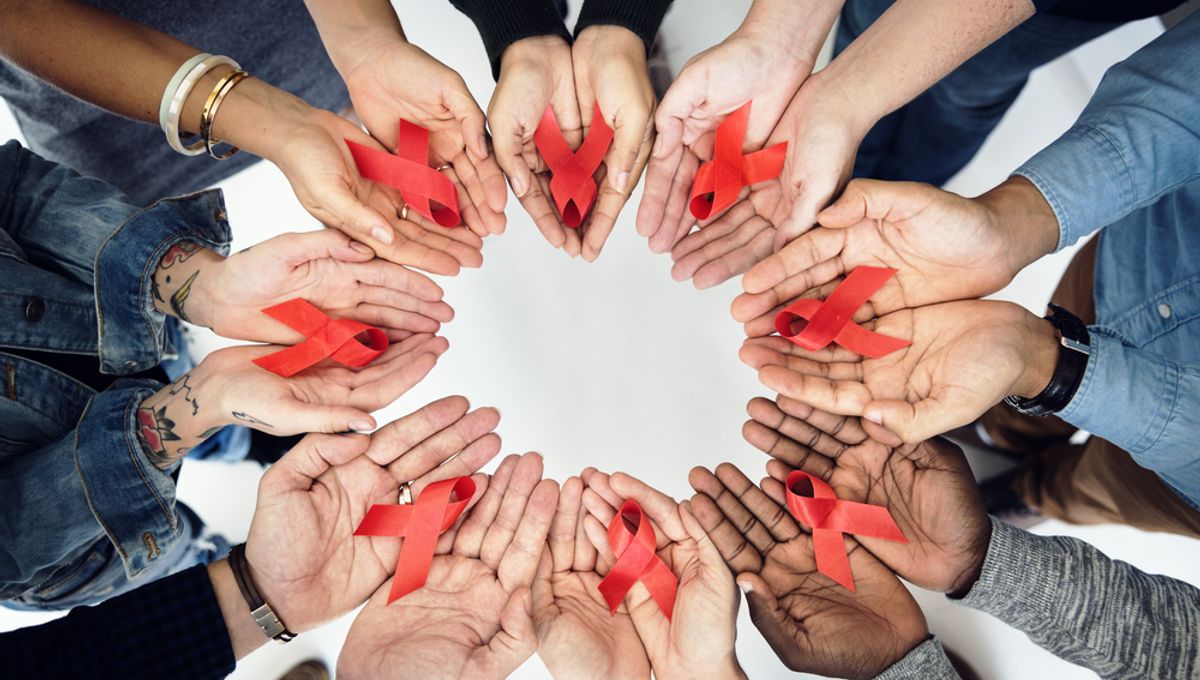
The World Health Organization (WHO) has released new guidelines describing the role that HIV viral suppression is playing in both improving the health of people living with HIV and stopping the further transmission of the virus. The guidance and accompanying systematic review of the science confirms what has been seen in many studies and what has been included in national guidelines: if your viral load is undetectable there is no way to transmit the virus to partners.
Having an undetectable viral load is unfortunately not a permanent cure. The virus can hide in cells where drugs can’t touch them. Targeting and destroying those reservoirs is the crucial challenge facing scientists working on an HIV cure.
The WHO’s work confirmed that thanks to antiretroviral therapy, people can achieve a state where the virus can no longer be detected in their system. At that point, they have the same life expectancy and health outcomes as their HIV-negative counterparts. There is also an extremely low risk of transmitting HIV to a child during pregnancy, less than 0.1 percent. And this can be pushed even lower with the correct approach.
But the guidelines also show that antiretroviral treatment is dramatically reducing the risk of transmission even before reaching the undetectable point. In people with a “suppressed” viral load (less than 1,000 copies per milliliter), the risk of transmitting HIV is almost zero. An enormous testament to how these drugs have changed and continue to change the lives of millions.
“For more than 20 years, countries all over the world have relied on WHO’s evidence-based guidelines to prevent, test for and treat HIV infection,” Dr Tedros Adhanom Ghebreyesus, WHO Director-General, said in a statement. “The new guidelines we are publishing today will help countries to use powerful tools have the potential to transform the lives of millions of people living with or at risk of HIV.”
The WHO reports that there are 39 million people living with HIV globally. About 76 percent of them are on antiretroviral treatment. That’s 29.8 million people. And 21.16 million people have a suppressed viral load. The percentage of people in this category is higher for adults than for children – only 46 percent of young people living with HIV have a suppressed viral load.
The numbers are good and much improved but more can be done to increase access to life-saving medication for anyone living with HIV. It also requires continuing to challenge the stigma about this virus and the people who live with it.
The guidelines also call for a better understanding of HIV in the context of other transmissible diseases, particularly relevant in the last few years, such as the mpox multi-country outbreak and the COVID-19 pandemic. The organization also calls for an expansion of testing including self-tests and testing promotion through community and social networks.
“Ending AIDS is impossible without optimizing opportunities across and within health systems, including with communities and in the context of primary health care,” explained Dr Jérôme Salomon, WHO Assistant Director-General, Universal Health Coverage, Communicable, and Noncommunicable Diseases.
The WHO reports that Australia, Botswana, Eswatini, Rwanda, the United Republic of Tanzania, Zimbabwe, and 16 other countries are on route to reaching the 95-95-95 global targets, a crucial milestone to end AIDS. This aims to have 95 percent of people living with HIV knowing their status, 95 percent of those diagnosed receiving antiretroviral therapy, and 95 percent of those on treatments having suppressed viral loads.
The new scientific and normative guidance on HIV was released at the 12th IAS (International AIDS Society) Conference on HIV Science. The systematic review is published in the journal The Lancet.
Source Link: Roadmap To End AIDS Presented In New WHO Guidelines